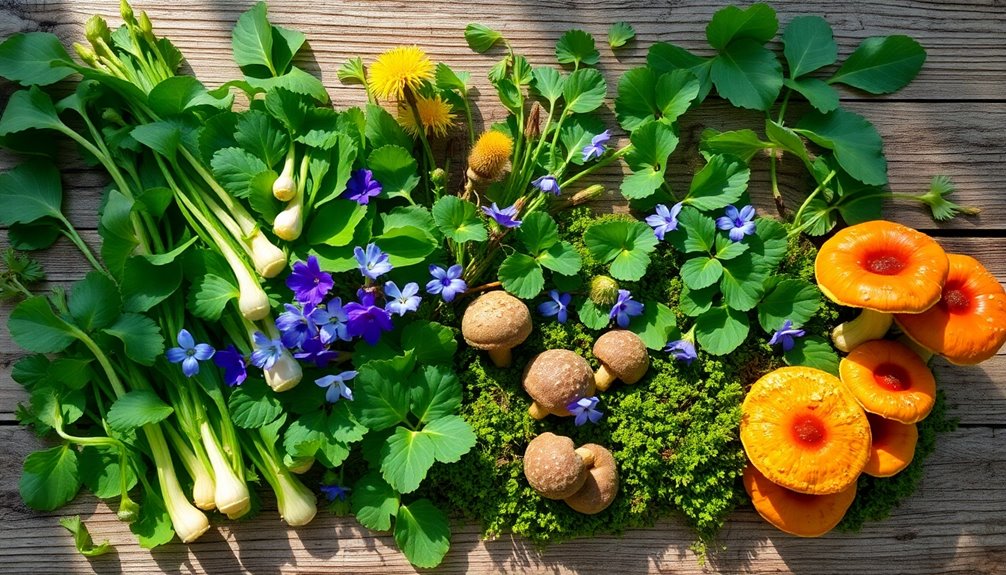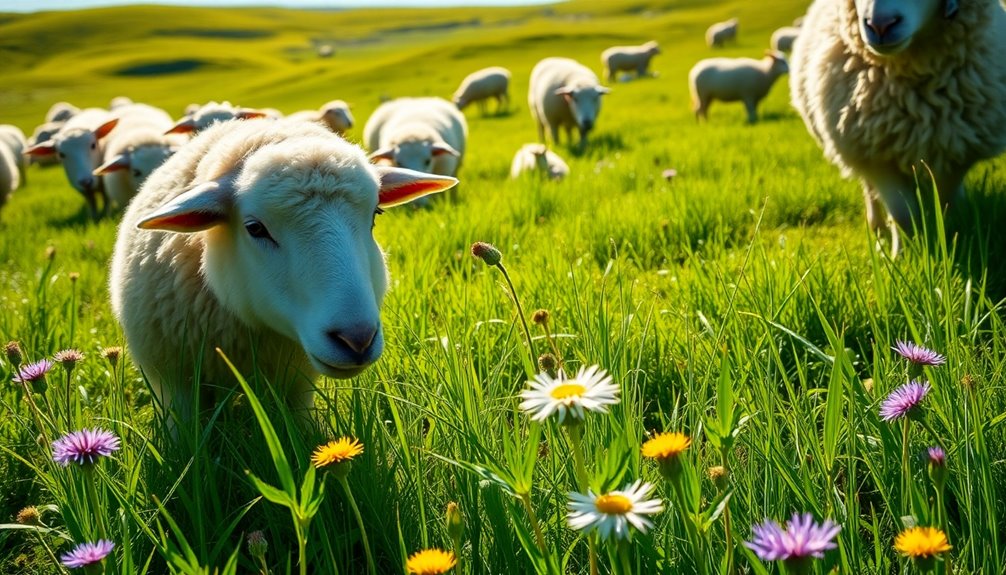Forage is a fantastic opportunity for internships, especially if you're looking to build skills without the usual pressures. These virtual internships are structured by top companies and allow you to learn at your own pace. You won't face competitive applications, and they're free, making them accessible to everyone. You'll gain practical experience with tools and concepts relevant to your field. Plus, completing these programs gives you a recognized digital certificate to enhance your resume. If you're curious about how to make the most of this unique chance, you'll uncover essential tips just around the corner.
Key Takeaways
- Forage offers free virtual internships that enhance resumes with recognized digital certificates, making them a valuable addition for job applications.
- The self-paced format of Forage programs allows flexibility, enabling participants to learn without the pressure of strict schedules or assessments.
- Designed by leading companies, Forage internships build practical skills through real-world simulations, preparing participants for industry challenges.
- The programs are accessible to a diverse audience, including international students and those without prior work experience, promoting inclusivity in career exploration.
- Engaging in multiple Forage programs creates a well-rounded skill set, boosting confidence and employability for aspiring professionals.
Understanding Forage Programs

For those looking to gain real-world experience, Forage programs offer an excellent way to immerse yourself in virtual internships created by top companies in various fields. These programs span disciplines like marketing, engineering, banking, and law, providing you with valuable insights and skills directly relevant to your career aspirations.
Each Forage program typically takes about 4–5 hours to complete and includes self-paced modules filled with introductory videos, engaging assignments, and personalized feedback from industry professionals. This structure allows you to tackle real work scenarios, honing your practical skills while learning how to navigate tasks similar to those you'd encounter in a traditional internship.
When you finish a program, you receive a digital certificate that enhances your LinkedIn profile and resume, showcasing your practical experience to potential employers. This accessibility makes Forage an inclusive opportunity for everyone, including international students and those with no prior work experience.
Benefits of Virtual Internships

Virtual internships offer you the flexibility to learn on your own schedule, making them accessible no matter where you are.
You'll have the chance to develop valuable skills through real-world tasks, which prepares you for the job market. Additionally, hydration is crucial for maintaining optimal brain function during your learning process.
Plus, with no grades or assessments, you can focus on genuinely engaging with the content to enhance your personal growth. Additionally, they often encourage self-care practices that contribute to your overall well-being during the learning process.
Flexibility and Accessibility
While many internships come with rigid schedules and extensive application processes, the flexibility and accessibility of virtual internships, like those offered by Forage, make them an appealing option for students everywhere.
You can immerse yourself in these self-paced experiences without the hassle of applications or fees. This means you can explore your interests while managing your other commitments.
Here are three key benefits of virtual internships:
- Self-Paced Learning: Complete simulations in just 4–5 hours, allowing you to fit the work around your class schedule or job.
- Wide Range of Opportunities: Explore various career pathways, from marketing to engineering, giving you a taste of multiple fields before you commit.
- No Pressure: With no grading or assessments, you can focus on developing genuine skills instead of stressing over performance metrics.
These features not only offer you the flexibility to learn on your terms but also enhance your resume with valuable certificates, positioning you favorably for entry-level positions. Additionally, you can benefit from the optimal tanning frequency recommended in skin health guidelines to maintain your well-being while pursuing your internship.
Virtual work through Forage truly opens doors for every student, making internships more accessible than ever.
#
Skill Development Opportunities
Often, students discover that virtual internships offer invaluable skill development opportunities that prepare them for the workforce. Forage provides virtual Experience Programs that focus on building practical skills essential for entry-level positions, with programs designed by leading companies across various disciplines, including marketing and engineering. These programs not only enhance industry-specific skills but also promote teamwork skills crucial in collaborative work environments. Additionally, developing a strong brand identity through these experiences can significantly enhance your employability. Moreover, engaging in these simulations can also help you learn about the importance of risk management strategies in navigating professional challenges. The use of AI-powered technologies in these programs can also enhance the learning experience, making it more engaging and tailored to individual needs AI technologies.
You can complete self-paced simulations in about 4–5 hours, allowing you to efficiently develop skills without the pressure of grading or assessments. The platform emphasizes hands-on experience, enabling you to enhance your design, prototyping, and strategic thinking abilities through real-world tasks faced in the industry.
As you engage with Forage's simulations, you'll not only boost your confidence during job searches but also learn to manage feelings of rejection by recognizing the importance of practical experience in your career development. Additionally, immersing yourself in these simulations can help you understand the significance of collaboration across teams in achieving project success.
Plus, the certificates awarded upon completion of these simulations add significant value to your resume. They complement your online courses and certifications, making you a more appealing candidate to potential employers.
## Skill Development Opportunities

Skill development opportunities through Forage provide a unique way to enhance your resume while gaining practical experience.
As you engage with self-paced virtual internships, you'll find that these programs allow you to manage your time effectively while building essential skills.
I've gotten valuable insights from working with industry leaders like Accenture and Electronic Arts.
Here's what you can expect to develop:
- Competencies in Design: You'll learn how to create impactful designs that resonate with your target audience.
- User Research Methodologies: Understanding how to gather and analyze user feedback is vital in today's market.
- Understanding KPIs: You'll grasp key performance indicators relevant to your field, enabling you to measure success accurately.
Real-World Application of Skills

Forage internships provide a practical setting where you can apply the skills you've developed in real-world scenarios. These simulations mimic industry tasks like designing a feature for a music app or strategizing a research plan for product design, giving you hands-on experience relevant to your future career.
You'll engage with industry concepts such as KPIs and user segmentation, which are essential for decision-making in fields like game design. The assignments encourage you to hone your iterative design and prototyping skills, closely reflecting the challenges professionals face daily.
By working with datasets and tools like Microsoft Excel and Tableau, you gain firsthand experience with software commonly used in the workplace. Completing these simulations not only boosts your confidence in applying what you've learned but also enhances your resume with certificates from leading companies.
| Task Type | Tools Used | Skills Developed |
|---|---|---|
| Designing App Features | Microsoft Excel | Prototyping, Design |
| Creating Research Plans | Tableau | Data Visualization |
| Analyzing Game Metrics | Industry KPIs | Decision-Making |
| Working with Datasets | Excel | Data Cleaning |
| Simulating Real-World Tasks | Various Software | Practical Application |
Comparing Forage to Traditional Internships

While traditional internships typically demand a significant time commitment and structured schedules, Forage offers a flexible alternative that can be completed in just 4–5 hours. This allows you to fit skill development into your busy life without sacrificing other commitments.
Here are three key differences between Forage and traditional internships:
- Accessibility: Forage programs are free and don't require an application process, making them open to everyone, including those without prior experience. Traditional internships often have competitive application processes that can be intimidating.
- Learning Style: With Forage, you engage in self-paced learning, promoting independence and personal initiative. Traditional internships usually involve hands-on experience with direct supervision, which can limit your creative freedom.
- Recognition: Upon completing a Forage program, you receive a certificate that can enhance your resume. In contrast, traditional internships often focus more on networking and mentorship, without formal recognition of your accomplishments. Engaging in self-paced learning can also help in developing organizational skills, which are essential for effective time management.
Choosing between these two options ultimately depends on your goals and circumstances, but Forage provides a unique opportunity to gain practical skills without the constraints of traditional internships.
Building Your Resume Effectively

How can you make your resume stand out in a competitive job market? Completing Forage's virtual internships is a powerful way to enhance your resume. Each program you finish earns you a digital certificate that you can proudly display on your LinkedIn profile and resume, showcasing the practical skills you've gained from real-world tasks.
When you list experiences from notable companies like Accenture or Electronic Arts, make sure you go beyond just naming these brands. Focus on detailing your specific contributions and skills, demonstrating how you've engaged with recognized industry practices. This adds credibility and depth to your candidacy.
Since Forage programs are self-paced, you can tailor your learning experiences to fit your personal projects, further integrating these skills into your resume.
Consider participating in multiple programs across various disciplines. This approach creates a well-rounded portfolio that highlights a broad skill set, making you more appealing to potential employers in diverse fields. Additionally, many employers conduct background checks to verify candidate information, so showcasing your skills and experiences can significantly impact your chances of securing an internship.
Insights From Personal Experiences

Engaging in virtual internships can transform your understanding of the job market and your personal capabilities. With Forage, you can complete programs in just 4–5 hours, giving you the chance to acquire practical skills without the stress of grading. Additionally, these experiences can help you develop key skills such as risk assessment, which are highly valued in various industries. Trust creation can be a vital skill in networking and building professional relationships, enhancing your workplace dynamics. Reading about best parenting books for discipline can also enhance your understanding of how to handle various workplace dynamics.
You'll find diverse opportunities from reputable companies like Lululemon and Accenture, which can greatly enhance your resume's credibility.
Here are three key insights from participants like you:
- Self-Reflection: You'll compare your work against industry standards, encouraging you to identify strengths and areas for improvement.
- Portfolio Boost: Many users report that these experiences complement traditional education, adding real-world examples to their job applications.
- Confidence Building: Completing these programs helps you manage rejection in your job search, allowing you to focus on practical experiences rather than just credentials. Additionally, engaging in these programs can foster a support network that enhances your learning journey and connects you with peers.
Target Audience for Forage

Forage caters to a diverse audience enthusiastic to kickstart their careers and gain practical experience. It's particularly suitable for individuals with entry-level curiosity and limited experience, making it an excellent option for students looking to enhance their resumes without prior work experience.
Whether you're a high school student or even a middle school student, Forage opens doors for younger audiences interested in exploring various career pathways.
The platform encourages you to pursue personal projects alongside program participation, allowing you to apply what you've learned in real-world contexts for added credibility. This hands-on approach not only helps you build skills but also makes your resume stand out.
Forage experiences are designed to complement your academic knowledge, providing structured opportunities for practical skill development relevant to various disciplines.
You'll find that the focus on personal initiative is key. By actively engaging with the material and tailoring it to your career interests, you can truly maximize your Forage experience.
This way, you're not just learning; you're also building a foundation for a successful career.
Maximizing Your Forage Experience

To maximize your Forage experience, set clear goals for what you want to achieve.
Set Clear Goals
Setting clear goals is essential for maximizing your Forage experience. By establishing specific learning objectives before diving in, you'll stay focused on developing skills that align with your career interests.
Here are three key steps to help you set effective goals:
- Identify Skills: Pinpoint the exact skills you want to enhance. Whether it's project management or data analysis, knowing your targets will guide your learning. Additionally, understanding the importance of energy consumption in various industries can provide a broader context for your skills. Consider how diversifying investments in different areas can improve your overall career trajectory. Engaging in puppy training classes can also help you develop patience and communication skills.
- Allocate Time: Dedicate specific time blocks to complete each simulation. The estimated completion time often underestimates the depth of research and effort required, so plan accordingly to avoid rushing through the material.
- Assess Progress: Regularly check your progress against your goals. This ongoing assessment will help you identify areas for improvement and guarantee you're gaining the intended knowledge.
Additionally, document your achievements and insights, as these will enrich your resume and provide valuable experiences beyond just recognizable company names. Implementing data-driven decision-making can further enhance your learning and application of skills gained during the internship.
Engaging actively with assignments and comparing your work to example models will refine your skills and deepen your understanding of real-world applications.
Engage With Content
Once you've established your goals, the next step is to actively engage with the content offered in the simulations. Approach assignments with a mindset of learning; complete them quickly and view your initial submissions as drafts. This way, you can focus on growth rather than perfection. It's also important to be aware of how user consent management can impact your data privacy while engaging with online platforms. Educational toys, such as STEM toys, can also encourage curiosity and exploration which is a crucial mindset for effective learning. Engaging with high-quality materials can also enhance your understanding and retention of the concepts presented. Furthermore, applying a patch test approach when experimenting with new learning methods can help you identify what works best for you.
Take full advantage of the structured format, which includes introductory videos and feedback. These resources can deepen your understanding of real-world tasks in your chosen field. As you work through the simulations, compare your output to the provided example models. This practice helps you identify areas for improvement and enhances your skill development.
Don't forget to engage in self-reflection after completing each simulation. This will allow you to grasp the dynamics of industry practices and apply them to your personal projects. Concentrate on your own learning and how to apply your new skills in real-world contexts. Additionally, remember that developing a structured routine can significantly enhance your ability to absorb and apply new knowledge effectively.
Key Takeaways for Interns

Interns can considerably boost their career prospects by engaging with Forage's free virtual internships. These programs allow you to gain practical experience without the stress of traditional internship applications.
Here are three key takeaways to maximize your experience:
- Flexible Learning: You can complete these internships at your own pace, typically in just 4-5 hours. This flexibility lets you fit learning into your schedule, making it easier to explore different career paths.
- Resume Enhancement: Upon finishing the simulations, you'll receive certificates that showcase the skills you've developed through real-world tasks. This tangible proof of your abilities can set you apart in competitive job markets.
- Skill Development: Forage emphasizes essential skills like design, user research methodologies, and strategic thinking. Engaging with these programs encourages you to apply what you learn in personal projects, ultimately providing richer experience than simply collecting credentials.
Frequently Asked Questions
Is Forage Good for Internships?
Forage can be a great option for internships. You get the chance to engage in real-world tasks, helping you build practical skills without needing prior experience.
With flexible completion times, you can fit it into your schedule easily. Plus, the certificates you earn can enhance your resume, showcasing relevant abilities to potential employers.
Should You Put Forage on Your Resume?
You might think adding Forage to your resume is like throwing a glitter bomb at a black-and-white movie; it instantly brightens things up!
Absolutely, you should include Forage on your resume. It showcases your initiative, practical skills, and commitment to professional growth.
Plus, that digital certificate? It's like a shiny badge of honor for your LinkedIn profile.
Employers love candidates who take charge of their learning, so don't miss this golden opportunity!
Is Forage Good for College Applications?
Forage can definitely enhance your college applications. By completing their virtual internships, you showcase practical experience and industry-relevant skills, making your application stand out.
You'll earn digital certificates to add to your resume and LinkedIn profile, highlighting your initiative and commitment to career development.
Plus, the hands-on simulations help you build confidence and understanding of various career paths, which colleges appreciate in proactive applicants like you.
How Does Forage Earn Money?
Did you know that 70% of companies now prefer virtual internships?
Forage earns money by partnering with these companies to create and host virtual internship programs. They charge businesses for access to the platform, which enhances employer branding and talent acquisition.
This model not only provides companies with valuable analytics on participant engagement but also connects them to a broader talent pool, all while offering free access to students.
It's a win-win!
Conclusion
In the end, think of a Forage program like a training ground for a marathon. Just as runners build stamina through practice, you're honing your skills and gaining valuable experience. The flexibility of virtual internships allows you to explore various fields, much like trying different running routes. Don't underestimate this unique opportunity; it could be the stepping stone that propels you toward your dream job. Embrace the journey, and watch your career take off!










